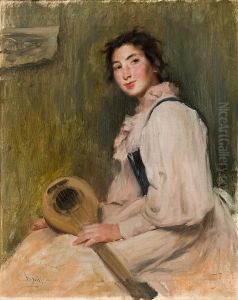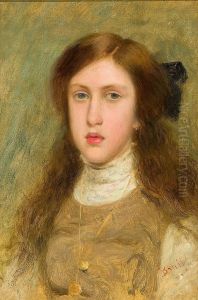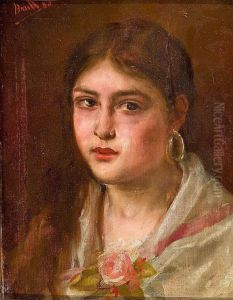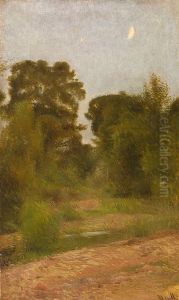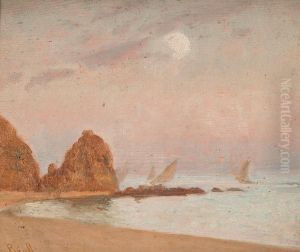Joan Brull Paintings
Joan Brull i Vinyoles was a prominent Catalan painter, illustrator, and poet, born on August 10, 1863, in Barcelona, Spain. His work is often associated with the Symbolist movement, which sought to express the more abstract, emotional, and spiritual elements of human experience. Brull's early education in art began at the Escuela de la Lonja in Barcelona, where he was influenced by the teachings of Modest Urgell and Antoni Caba. He also spent time in Paris, where he was exposed to the contemporary art movements of the late 19th century, including Impressionism and Symbolism, which had a lasting impact on his style and thematic choices.
Throughout the 1890s, Brull developed a distinctive style that combined his Symbolist tendencies with elements of Modernisme, the Catalan variant of Art Nouveau. His work often featured dreamlike landscapes, mystical figures, and a deep sense of spirituality, with a particular emphasis on the depiction of female beauty and nature. Brull was an active participant in the vibrant cultural life of Barcelona, contributing to various artistic and literary circles. He was closely associated with the magazine 'Pèl & Ploma,' where he published both his writings and illustrations, further establishing his reputation as a multifaceted artist.
Despite his death at a relatively young age on May 18, 1912, Joan Brull's contribution to the Catalan art scene of the late 19th and early 20th centuries was significant. His work is seen as a bridge between the more traditional styles of his early education and the innovative movements of the time, embodying the transition towards modernity in Catalan art. Brull's paintings continue to be celebrated for their ethereal beauty and complex symbolism, earning him a place among the notable figures of Catalan Modernisme.
